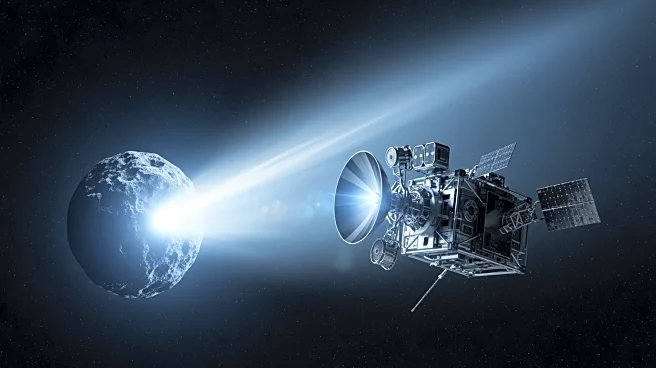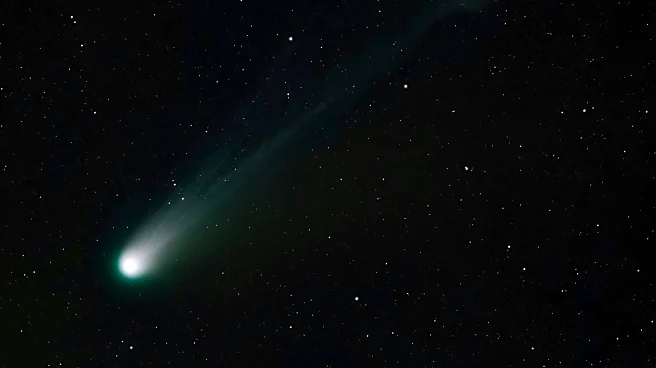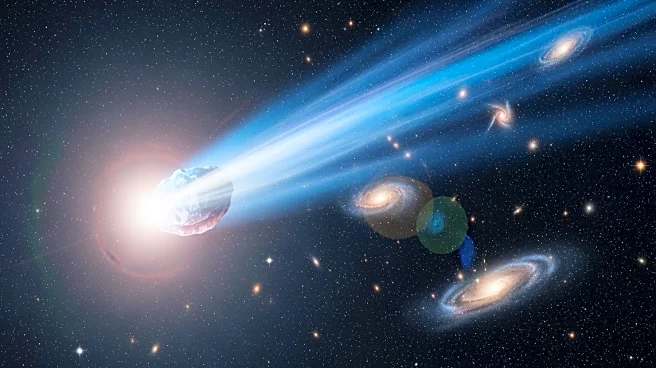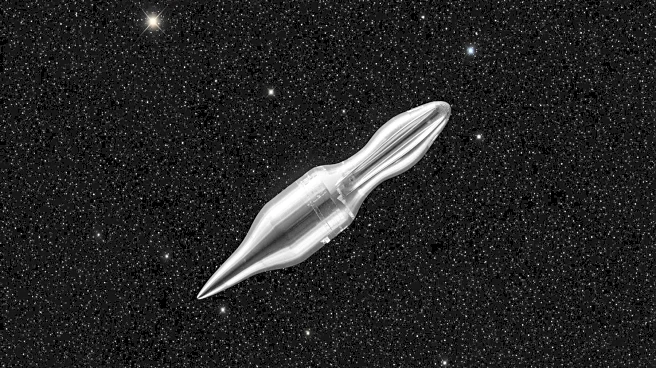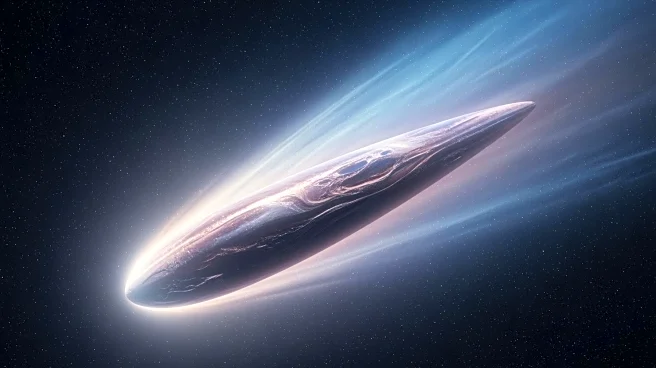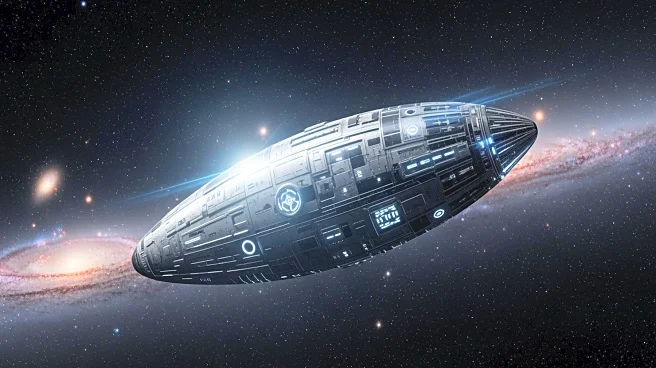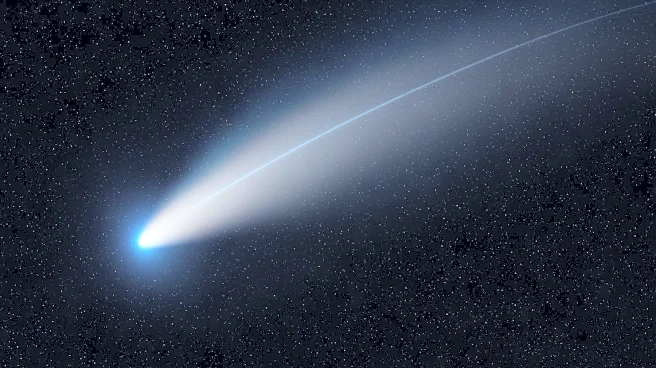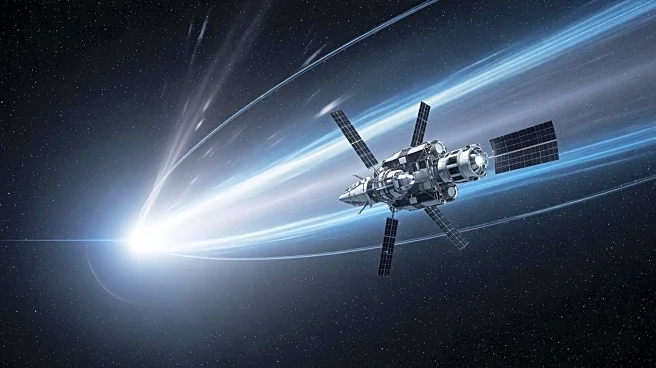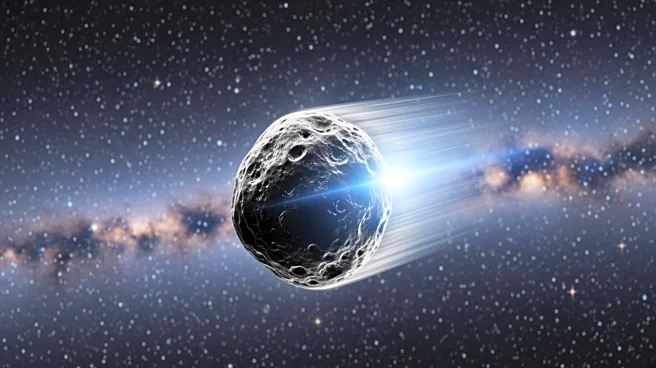What's Happening?
Two space probes, Hera and Europa Clipper, are positioned to potentially pass through the tail of the comet 3I/ATLAS, a Manhattan-sized object currently moving through the solar system. This opportunity
arises as both probes are on separate missions but are aligned to intersect with the comet's particle trail. The comet, first observed in June, has intrigued scientists due to its unusual behavior and composition, including the emission of a nickel alloy typically associated with human manufacturing. The probes could collect unprecedented data from the comet's tail, although they would not fly directly through it but rather through a dispersal field created by the Sun's solar wind. This field is approximately 5 million miles from the comet itself.
Why It's Important?
The potential interception of 3I/ATLAS by the Hera and Europa Clipper probes represents a significant opportunity for scientific advancement. Collecting data from the comet's tail could provide insights into its composition and behavior, contributing to our understanding of such celestial bodies. This mission could also validate theories about the comet's origins and its unusual characteristics, which some speculate could indicate non-natural origins. The success of this mission would enhance our capabilities in space exploration and comet study, potentially influencing future missions and the development of space technology.
What's Next?
For the probes to successfully intercept the comet's tail, scientists must act swiftly to adjust their courses. The window of opportunity is limited to the next two weeks, requiring immediate action. If successful, the Europa Clipper, equipped with the necessary instruments, could gather valuable data. However, Hera's current mission to study an asteroid may limit its ability to contribute significantly. The scientific community will be closely monitoring the situation, and any data collected could lead to further research and exploration initiatives.
